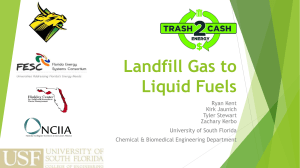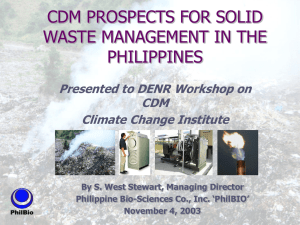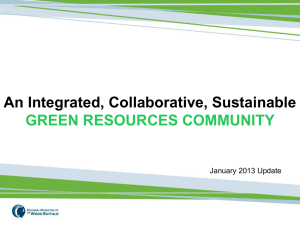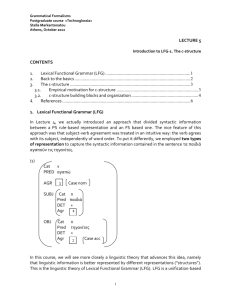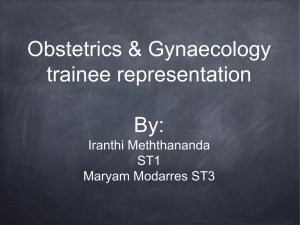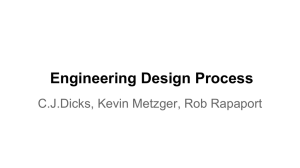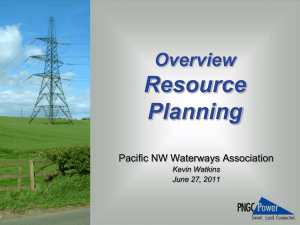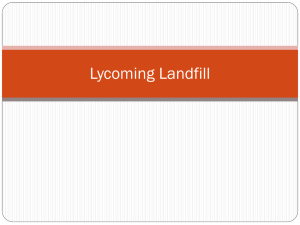ASME Luncheon Presentation - Renewable Energy Alaska Project
advertisement
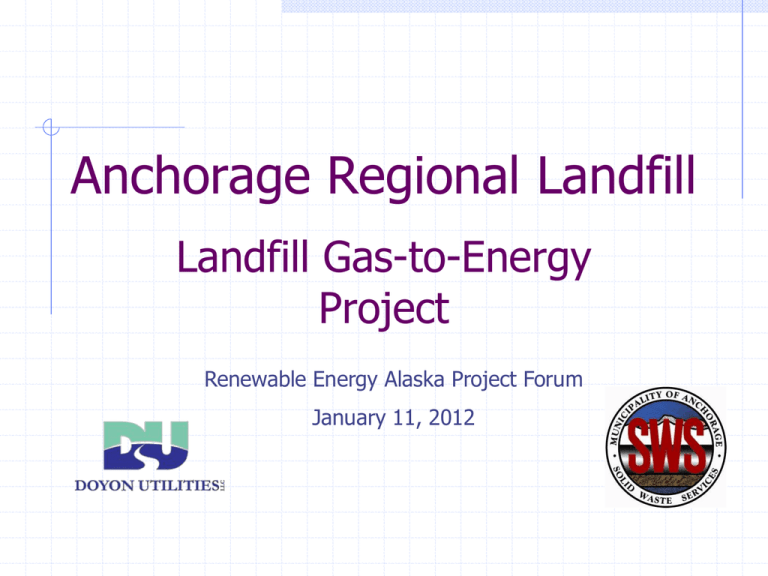
Anchorage Regional Landfill Landfill Gas-to-Energy Project Renewable Energy Alaska Project Forum January 11, 2012 Project Organization Design, build, operates project facilities Owns, operates landfill and LFG Collection system Own Power Plant and electrical infrastructure Owns LFG Processing and transmission facilities Power Customer Grant Contributor Anchorage Regional Landfill 300,000 tons annually 8 million tons in-place 22 million ton total capacity Expected life – 2050 Landfill Gas Generation Organic Materials In Waste Stream Anaerobic Decomposition Moisture Heat Landfill Gas (CH4, CO2 + trace organics) Gas Characteristics Typically Makeup - 50% Methane, 50% CO2 Typical energy content – 500 BTU/ft3 Typical moisture content – saturated May contain other constituents Nitrogen, VOCs, siloxanes, H2S, etc.) (Oxygen, LFG Generation General industry rules of thumb: Each million tons of waste in place has the potential to generate 200-700 cf/min of LFG. Each ton of waste in place has potential to generate 3,900 – 6,600 cf of LFG over the life of the landfill. Expected LFG Generation 3,000 Upper limit of LFG Generation Rate Current LFG Production 2,500 Lower limit of LFG Generation Rate Average LFG Generation Rate 2,000 1,500 2007 ~ 1,000 cfm/ 30 MBtu/hr 2045 ~ 2,200 cfm/ 66 MBtu/hr 1,000 EPA LMOP Generation Model 2099 2095 2091 2087 2083 2079 2075 2071 2067 2063 2059 2055 2051 2047 2043 2039 Estimated Landfill Life 2035 2031 2027 2023 2019 2015 2007 2003 1999 1995 1991 0 1987 500 2011 2017 ~ 1,500 cfm/ 45 MBtu/hr Proposed Project Layout Existing Gas Collection System Proposed Power Plant Gas Processing Facility Existing Blower/Flare Site Processed Gas Pipeline Gas Collection System (GCS) Gas Collection System Purpose: Landfill emission control; collects LFG to central facility Ownership: SWS Operator: SWS Components: Wells, piping, blowers, flare (constructed by SWS in 2006 with future expansions as needed) Current System in Place Constructed 2006 for air quality compliance. Blower plant Enclosed flare 2,400 scfm capacity 2,000 scfm capacity Gas collection wells and piping 35 vertical wells 12 horizontal wells 8 leachate system connections Continued expansion as landfill ages. Gas Processing System (GPS) Purpose: Process gas from field to fuel quality; deliver to Power Plant Operation: Gas delivered to GPS. LFG CONDENSATE Gas Processing System Condensate and other undesirable components removed from LFG returned to GCS. DU takes ownership of LFG at Title Point (T). Delivered to Power Plant by pipeline. Project Cost: $3.8 million Ownership: SWS Component Financing: Operator: Doyon Utilities T $2 million from AEA Grant, all other costs paid by DU. Power Generation ARL FENCE LINE Power Generation Purpose: Uses LFG as fuel to produce electricity. All power delivered to JBER through Ft. Rich D Street Substation Ownership: Doyon Utilities Operator: Doyon Utilities JBER JBER Distribution Grid Components: Generators, switch gear and related controls. Power Plant Jenbacher J420 Generators 1.4 MW per Unit Initial installation – 4 units Operates on either LFG or commercial natural gas Change fuel source on the fly Under consideration: 5th generating unit Organic Rankine heat recovery units Contract Timeline 2011 DEVELOPMENT 2012 COMMISSION CONTRACT AWARD 90 DAYS 2013 CONTRACT PERFORMANCE PERFORMANCE TESTING 20 YEARS DEVELOPMENT COMMISSIONING Permitting, design, procurement and construction of GPS and Power Plant Startup and testing of all components and systems No gas sold or delivered. Gas delivered at no cost. No minimum gas purchase requirement. No minimum gas purchase requirement. 90 day maximum duration. Contract Timeline 2011 DEVELOPMENT CONTRACT AWARD 2012 COMMISSION 90 DAYS 2013 PERFORMANCE TESTING CONTRACT PERFORMANCE 20 YEARS PERFORMANCE TESTING CONTRACT PERFORMANCE Fine tune operation of GCS, GPS and power plant for optimization Full system operation. All gas sold at contract price. No min. gas purchase requirement. Ends latter of 1/1/13, first month after Commissioning or 24 mos. from Contract Award Tier gas pricing in effect. Take Or Pay minimum gas purchase requirement. A Win – Win Project Municipality Generates revenue off a waste product. Revenues will offset operating costs which will reflect in user tipping fees. JBER The project will produce ~50% of the JBER power demand Dual fuel capability assures stable power supply Immediate availability of fuel provides more reliable power in emergencies. Landfill Gas to Energy Questions? Contact Mark Madden, P.E. Director Municipality of Anchorage Solid Waste Services 907.343.6279 maddenmg@muni.org
